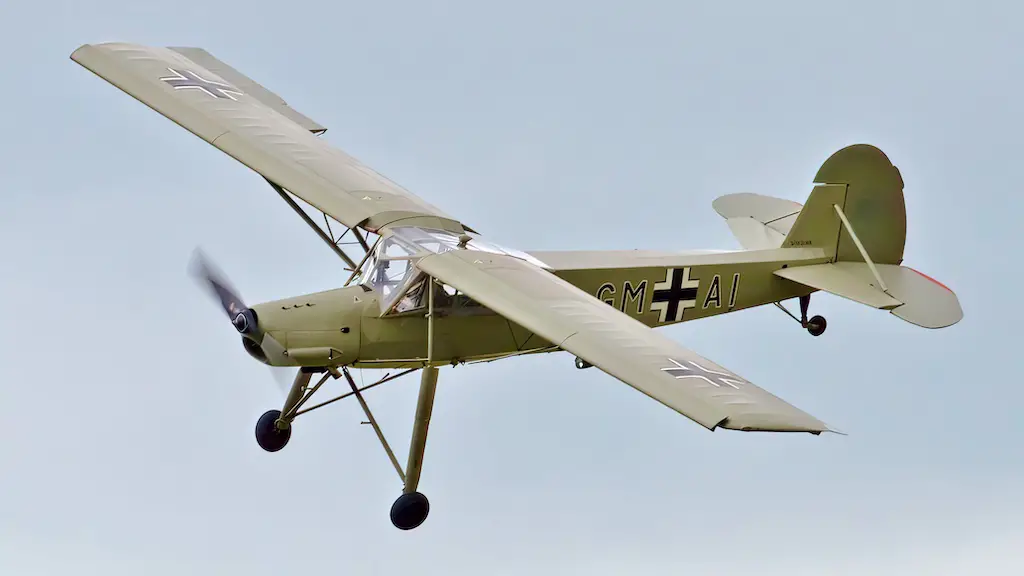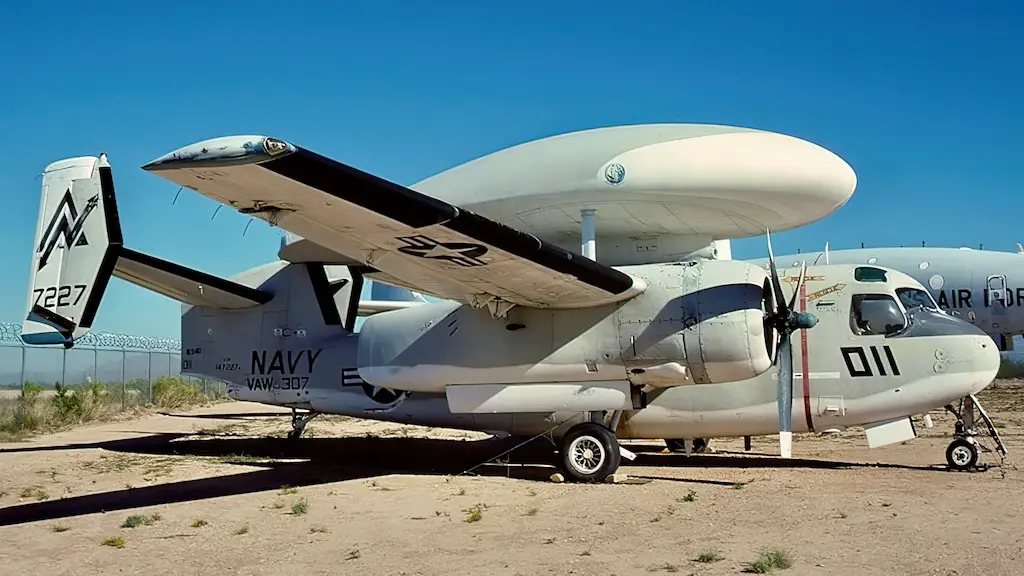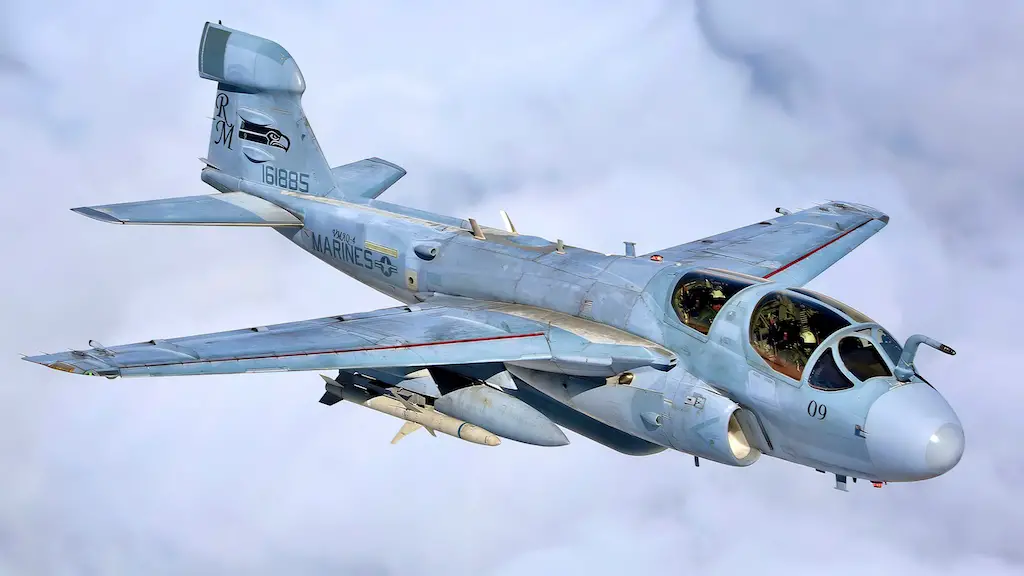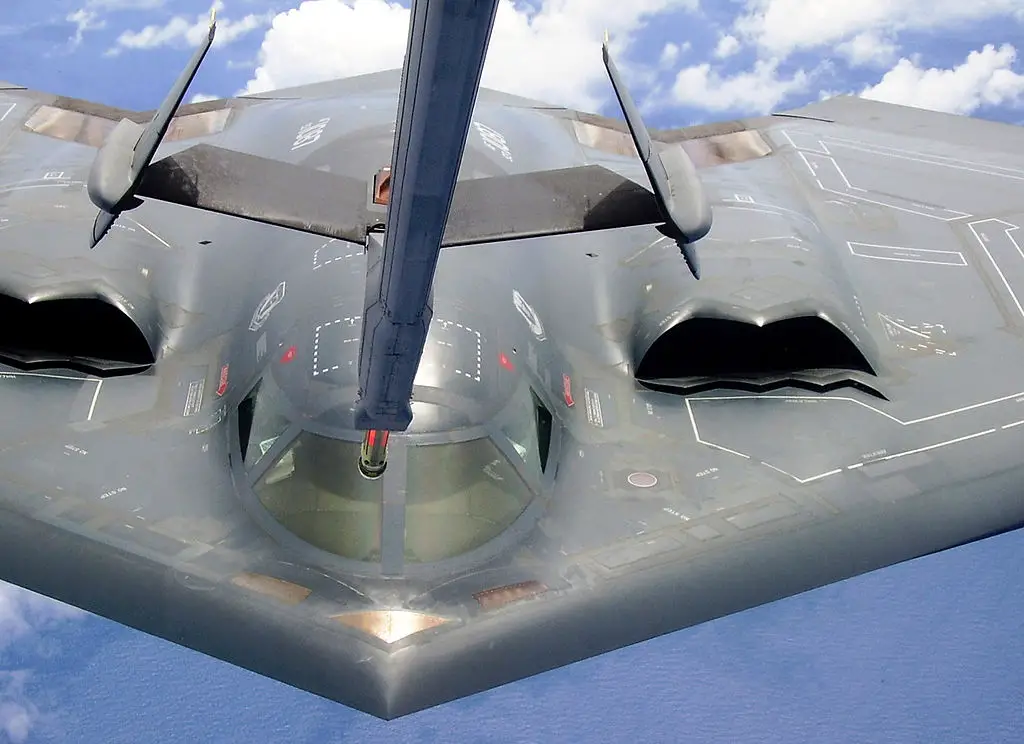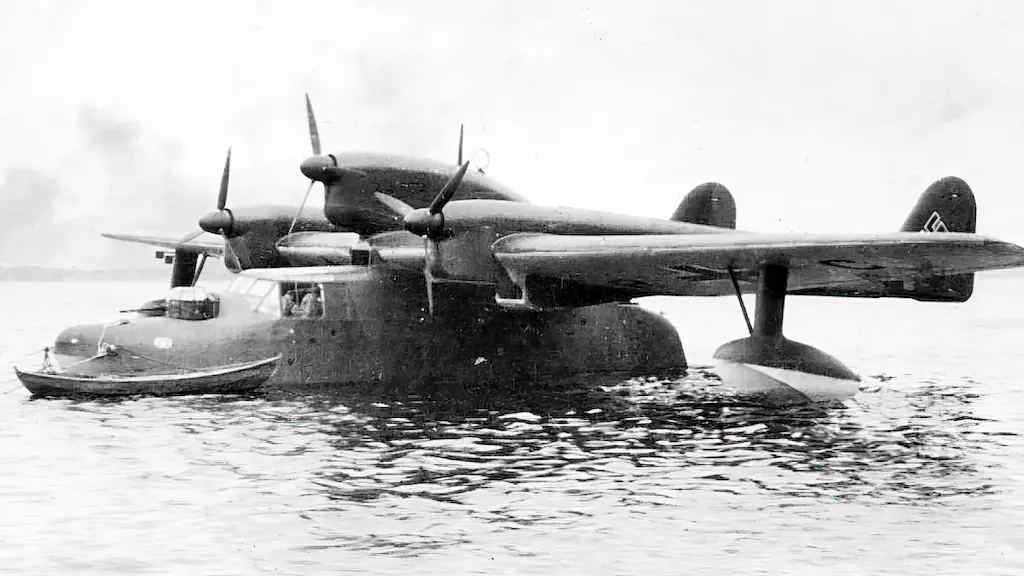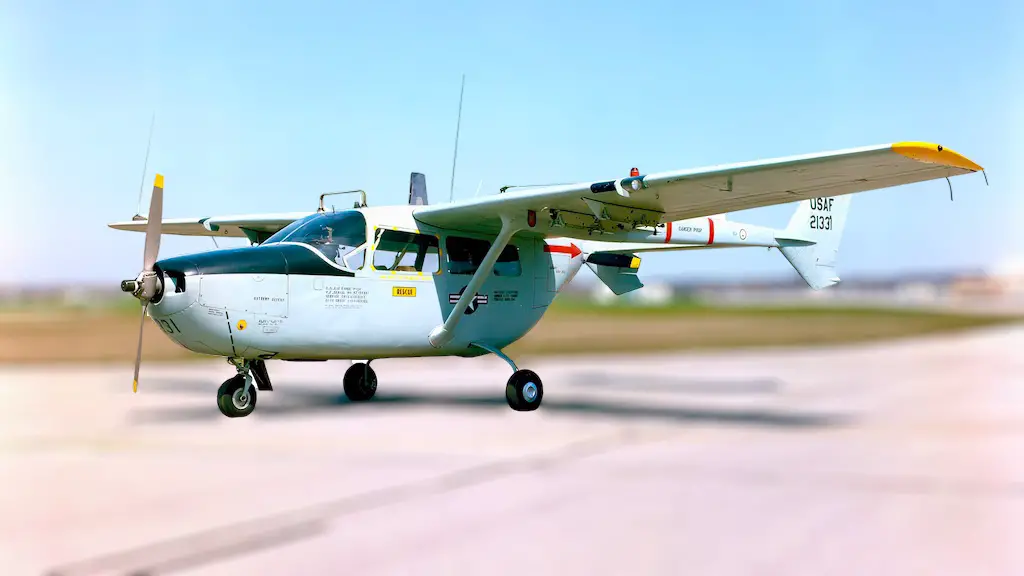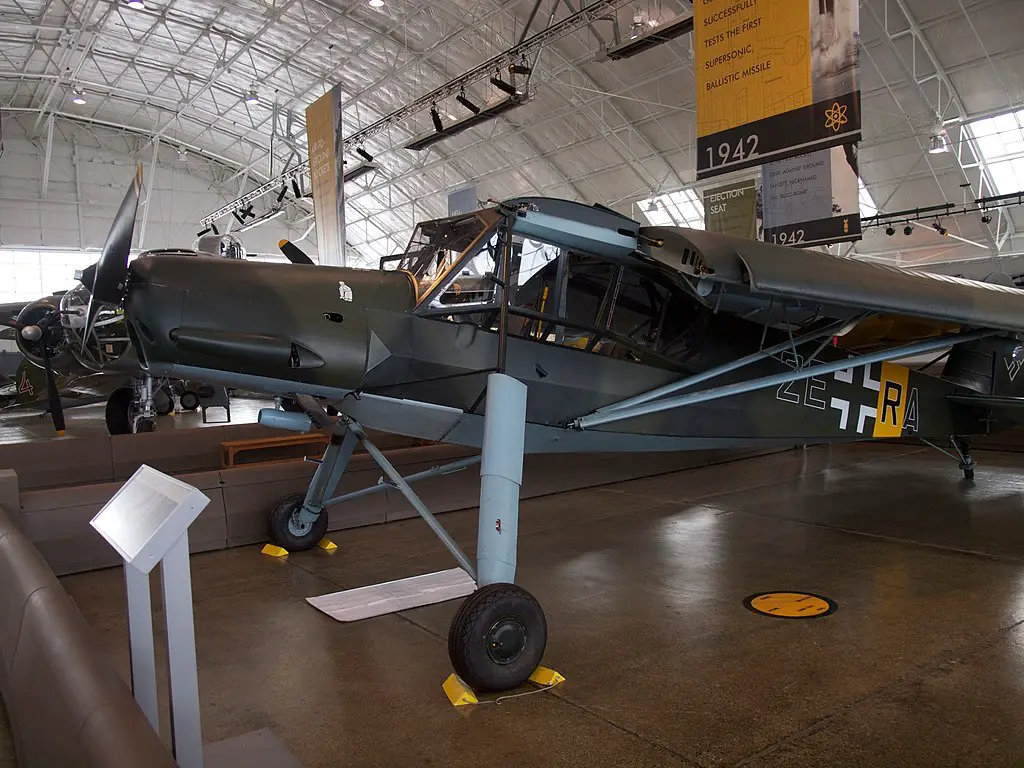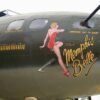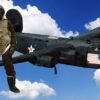With a top speed of just 109 mph, Fieseler Fi 156 Storch was one of the slowest German aircraft that took part in the Second World War. It was one of their best, too. The Storch was a perfect observation and liaison aircraft. It could land and take off pretty much anywhere, be it a clearing in the wood or a mountain peak.
It also could fly so slowly that only a helicopter could beat it at that, and helicopters were virtually non-existent at the time. In certain conditions the Storch could even “fly backwards!” Given such brilliant capabilities it’s no wonder that the aircraft was produced in large numbers and used extensively in routine operations, as well as for special tasks throughout WWII. More astonishing though, is that variants of this marvelous aircraft were still in production in the 21st century!
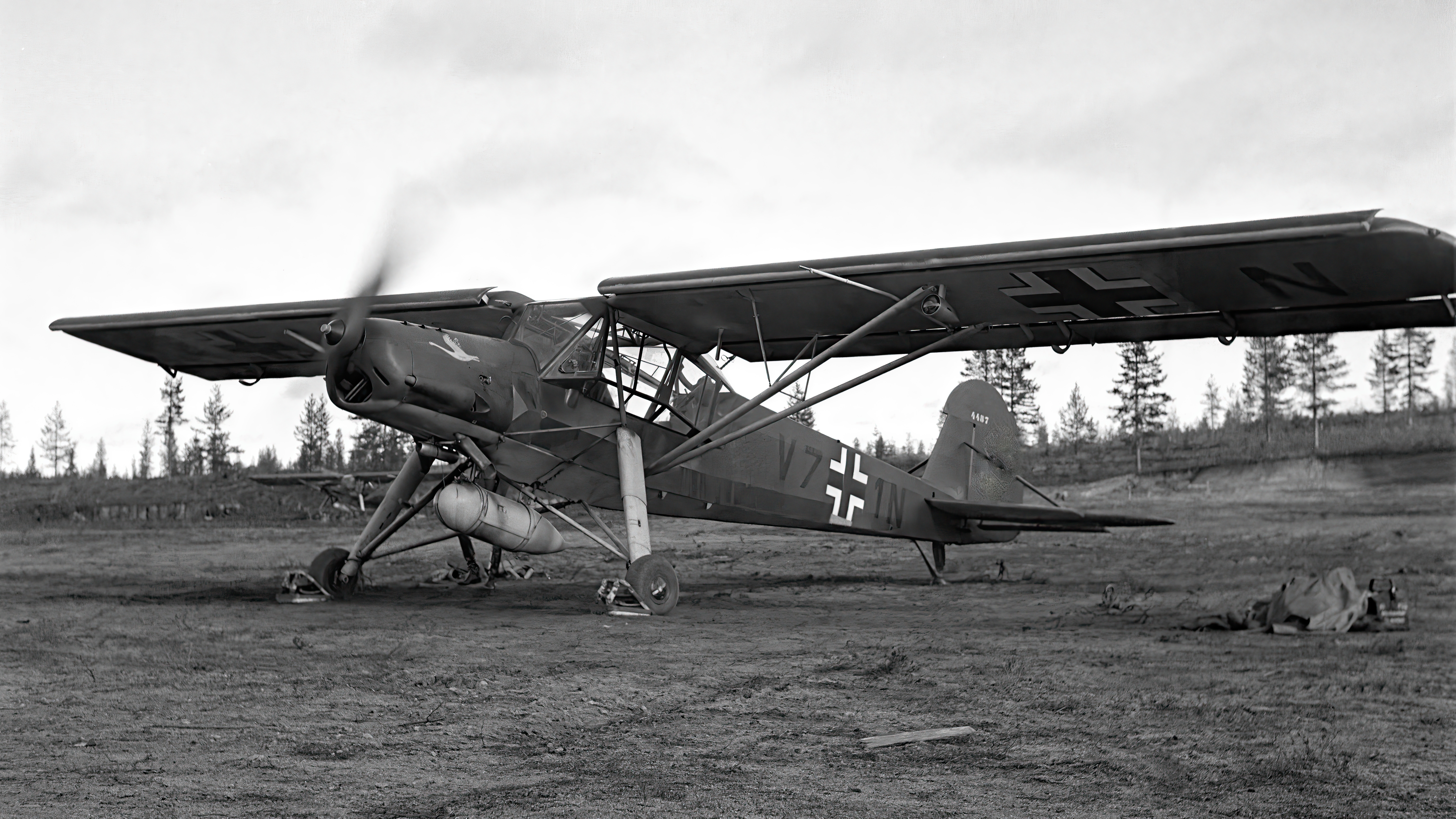
The STOL capability
The Storch’s takeoff and landing requirements were so undemanding that it can without any exaggeration be called a short takeoff and landing (STOL) aircraft. In a light breeze the Storch needed mere 200 ft for the takeoff and about a third of that distance for landing. Its long hydraulically damped landing gear legs also ensured that Storch could operate from very rough terrain and withstand very hard landings. On top of that, the Storch’s wings could fold back for storage and transportation, which meant it could be towed by a truck to wherever it was intended to operate.
The no-stall capability
Weighing some 2000 lb empty and a little under 3000 lb loaded, this three-seater monoplane had a high-mounted wing with an area of 280 sq ft a span of 47 ft. The design of Storch’s wings was very innovative for its time, featuring slotted ailerons and camber-changing flaps along the entire trailing edge. The Storch owed its excellent capabilities mostly to its brilliantly designed wing.
With a stall speed around 30 mph, the Storch’s low speed performance was close to that of a helicopter, making it ideal for observation purposes. In fact, flying into a 25mph wind the Storch could virtually ‘hover.’ And in a really strong wing it was reported to even “fly backwards.”
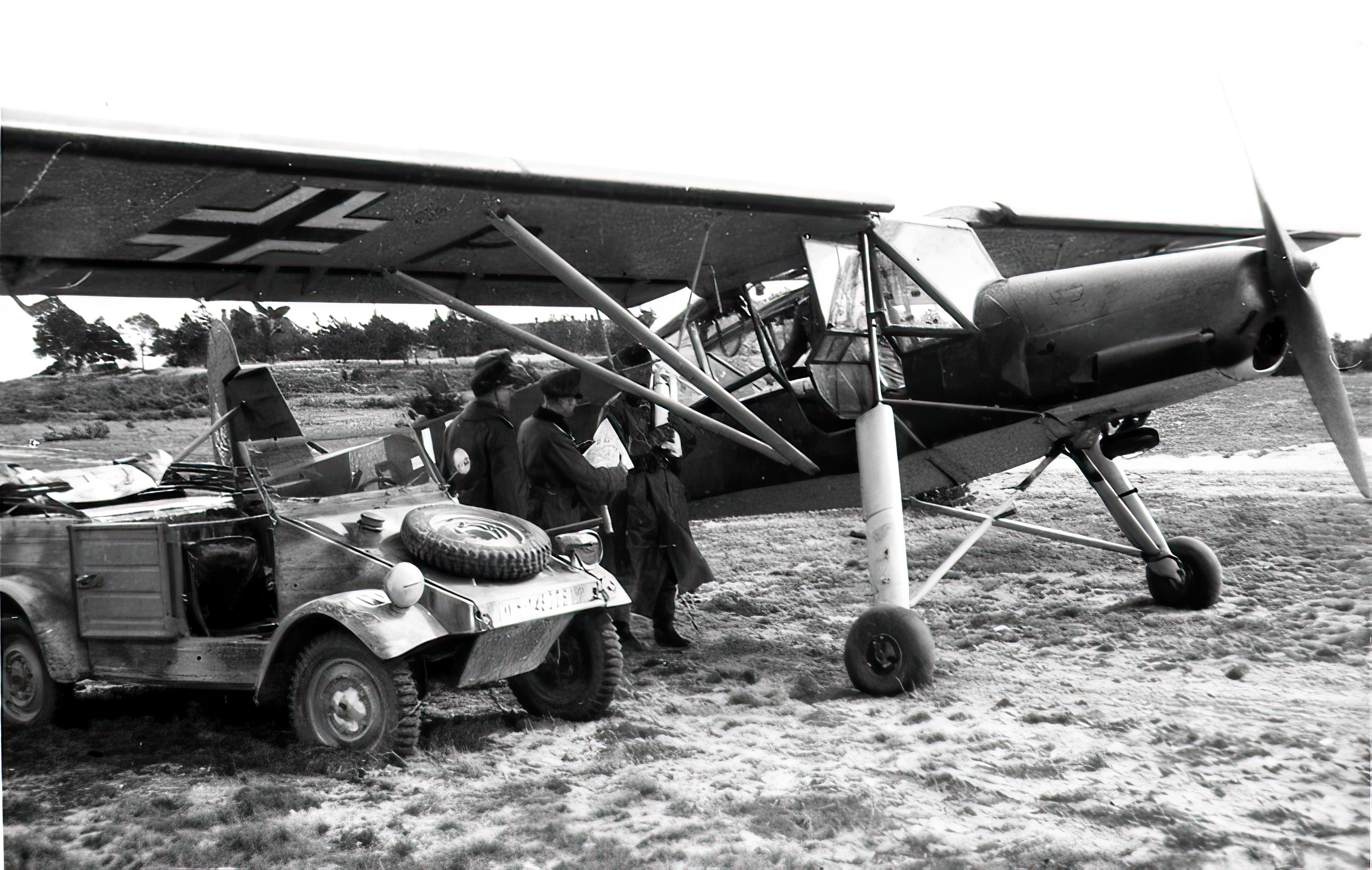
The Storch also retained a high-maneuverability even at such small speeds, which meant that despite having little or no defensive armament or armor it was not such an easy prey for enemy fighters as it may seem. The Storch was often able to dodge their attacks by maneuvering at low speeds while flying at treetop level. Some airframes were also fitted with a rear-firing 0.3in MG15 machine gun, but the aircraft’s performance gave it more survival chances than this weapon.
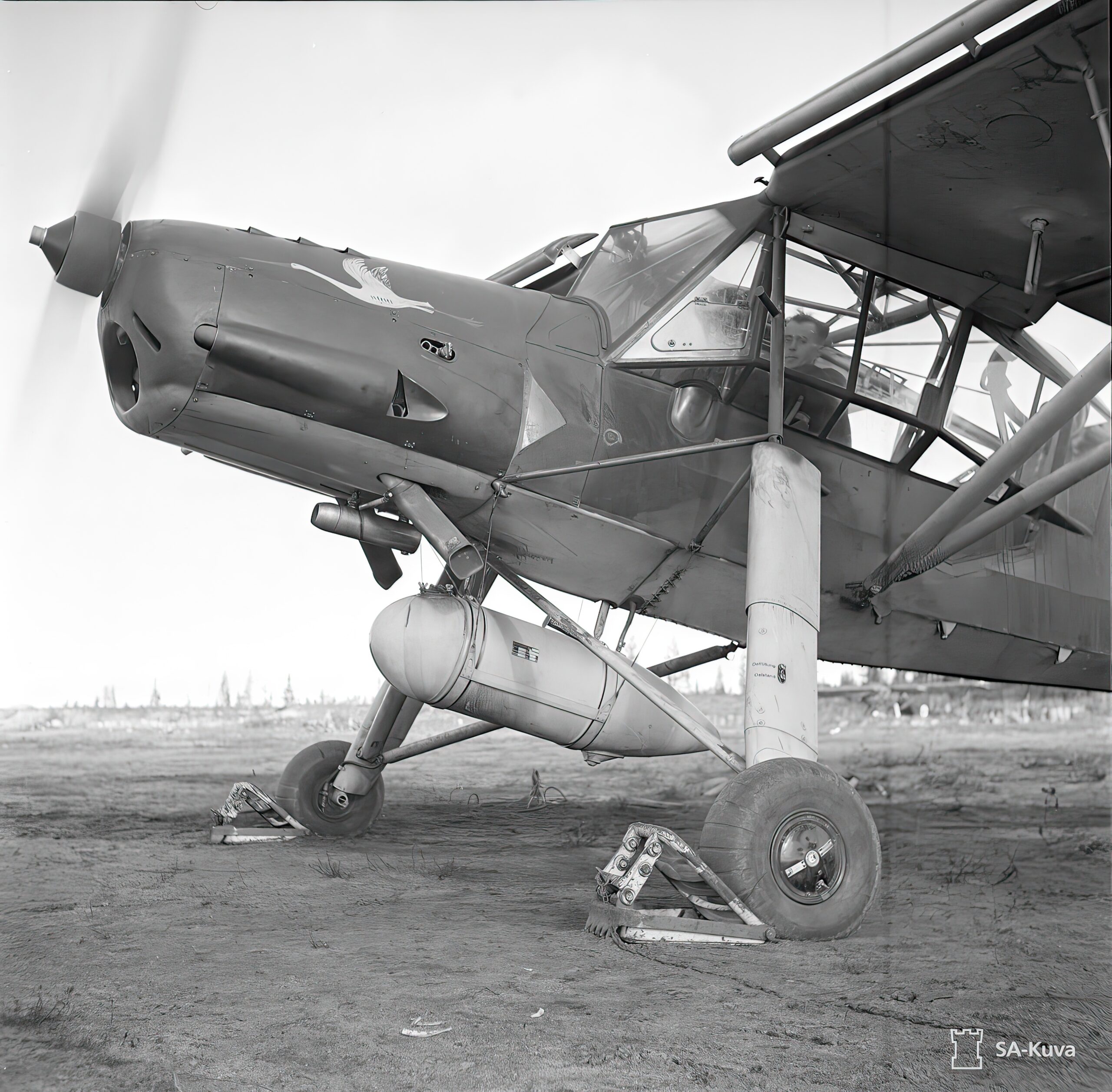
Perfect spotter plane
The first Fi 156 prototype made its inaugural flight in May 1936, and by the time the German military was rolling across Europe, it was in active service with the Luftwaffe. The Storch flew in virtually all war theaters were German forces operated, from the Arctic to North Africa.
Capable of staying in the air for two to three hours on end, and featuring a glazed cabin protruding outside the airframe, the Storch was a perfect spotter. It was also widely used as a communication and command plane, carrying couriers and German officers of all ranks. Storch’s were often used to rescue downed pilots, and a late variant of the aircraft was also equipped to carry a single stretcher for casualty evacuation.
While the attack role was not common for Fi 156, in some cases it did carry small bombs and was even tested in the anti-submarine role, wherein it was armed with 300-lb depth charges. In 1940, Storch’s were used in Belgium to deliver assault teams tasked with taking over key bridges and other important locations ahead of the main German troops.
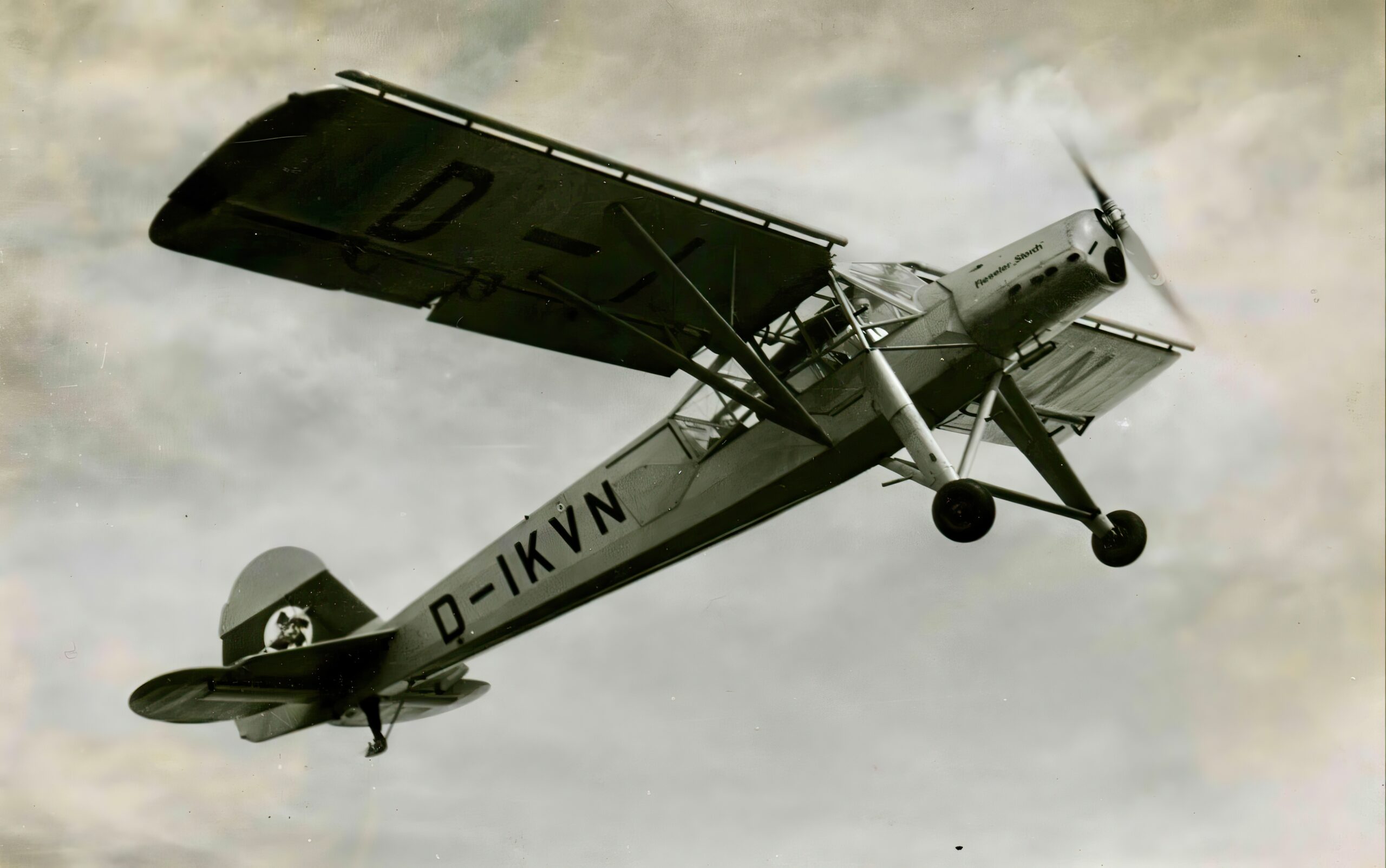
Still relevant
During the war, Storchs were produced not just at Fieseler facilities in Germany, but also in France and Czechoslovakia, which were also under German control. In France the aircraft was produced at Morane-Saulnier factory and in Czechoslovakia by Beneš-Mráz. After the war both companies continued producing this highly-successful plane. The French variant was designated MS 500 Criquet, and the Czechoslovakian one K-65 Čáp. While the latter’s production run ended in 1949, the French went on making their Criquet until 1965. It even took part in yet another war, in Indochina.
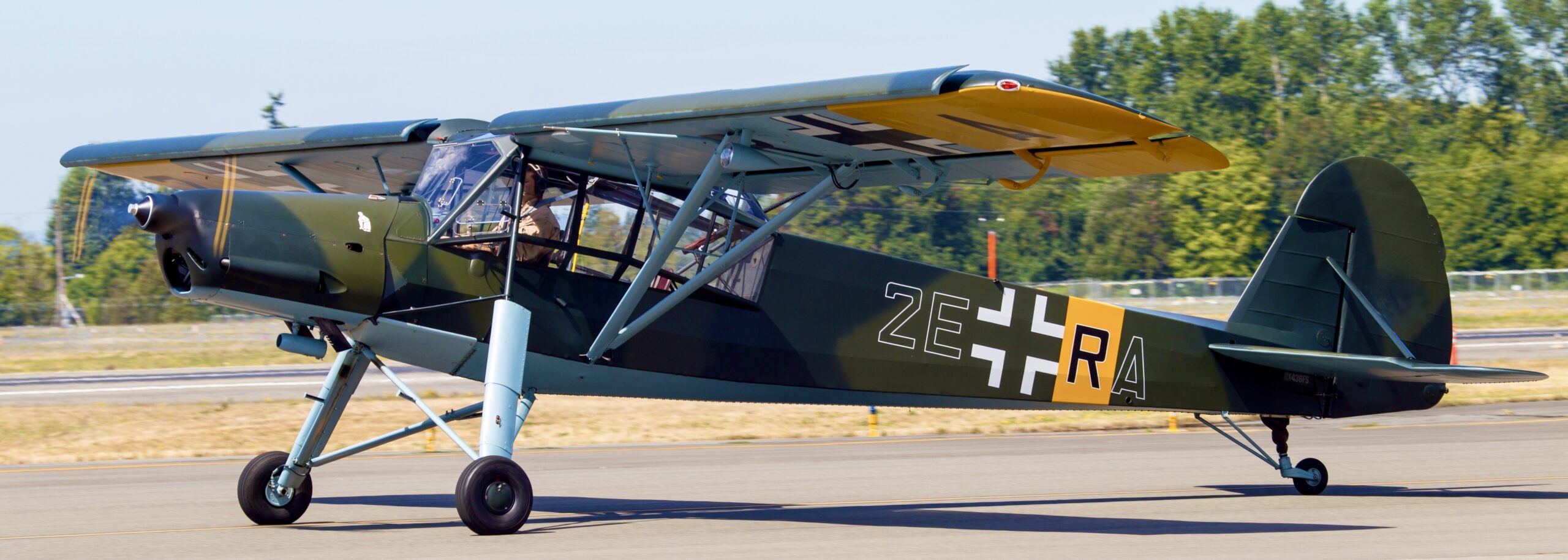
However, the Storch has proven to be such a brilliant design that certain variants of it were in production even some eight decades after its first flight. In particular, Storch Aircraft Serbia produced the Slepcev Storch. Created by Yugoslavian-Australian aircraft designer Nestor Slepcev, it is a 3/4 scale replica of the Fieseler Fi 156 Storch, manufactured as a kit plane using modern materials.

